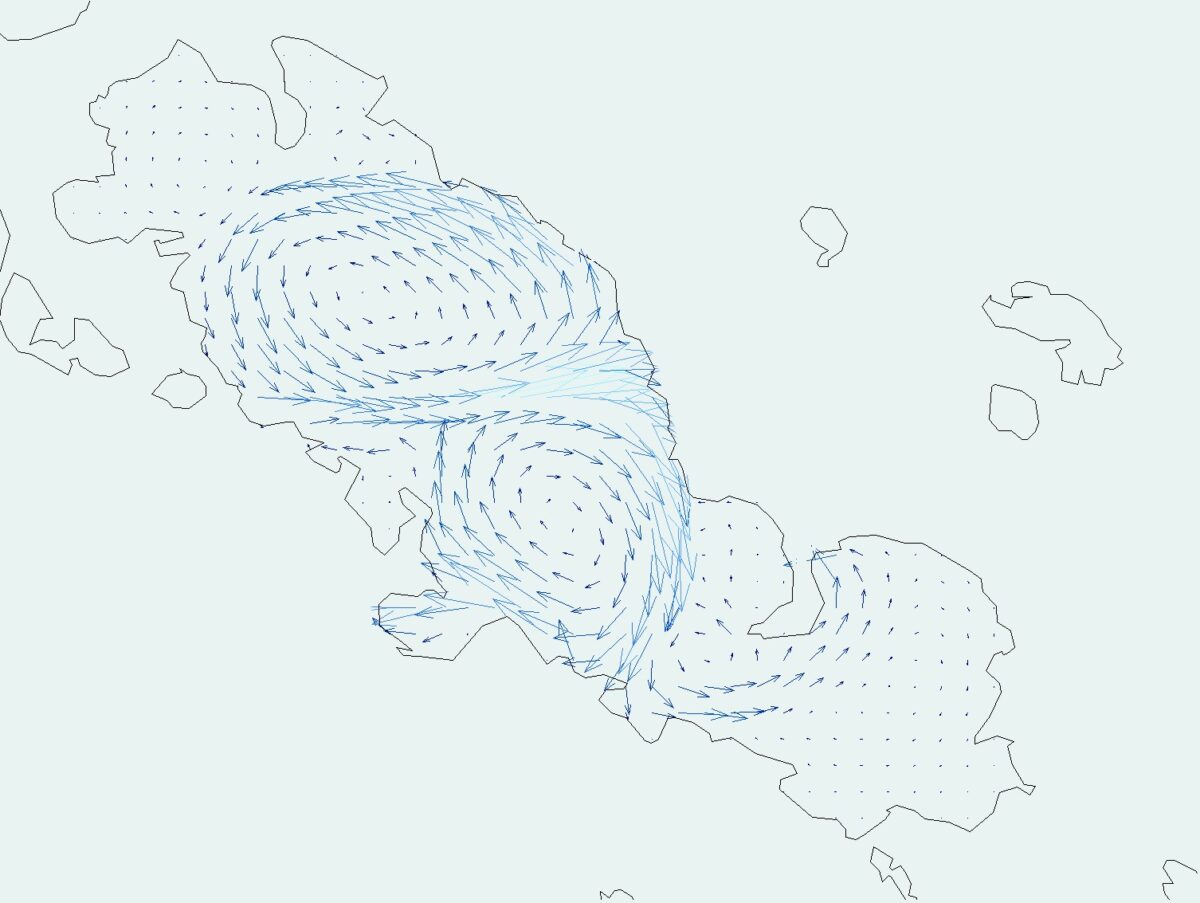Flow modelling
Flow modelling can be used to assess the effects of aquatic construction on the flow regime.
Flow modelling can be used to assess the effects of aquatic construction on the flow regime.

Flow modeling is used to study the effects of construction on the flow conditions when structures affecting the water flow are being planned or approved. Typical applications are related to community planning, bridge projects, dredging and dumping sites, the design of harbors and breakwaters, and the design of cooling water intake and discharge structures.
Flow modeling also creates the basis for different emission spreading studies. The ability of the model to reliably simulate naturally occurring flow conditions is validated by comparing the modeled results to flow measurements made in the target area.
Read more on flow measurements.
Modeling of flow effects can be used to evaluate near-field effects on flow conditions in different water construction sites. At the same time, the wider effects of the project on the efficiency of water exchange in the surrounding area can be determined. Modeling enables the comparison of the effects of different alternative structures and helping in finding the best option.